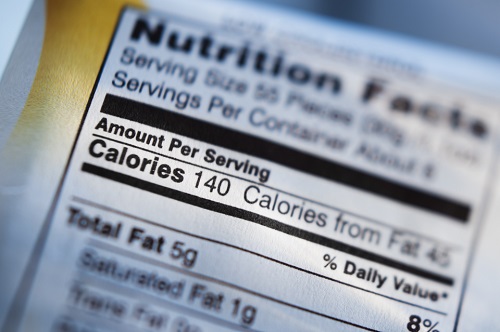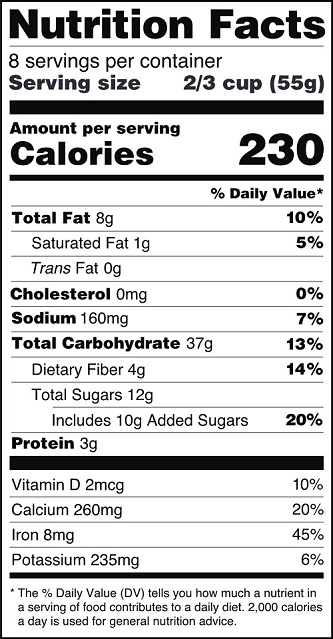Nutrition Facts Food Label: What’s New

Reviewing the potassium, phosphorus, sodium and overall nutritional value of a food can be useful when making choices about what to eat for a kidney diet. The newly updated food labels are an important resource to help better understand what’s in the foods you buy. Updates made to food labels in the past year may prove to be useful when it comes to planning meals or snacks.

What’s new on food labels?
Calories are now in a much larger font that’s easier to read. Serving size is also in a larger, bolder type. Even the serving size amount has increased to be more in line with actual serving sizes most of us consume. For example, a brand of cinnamon flavored cereal was once evaluated as a 3/4 cup serving. Now it is a 1 cup serving. This is very helpful because one cup of cereal is a much more realistic serving size for everyone.
Daily values have been updated and now there is a section for added sugars. This may be helpful for you if you have diabetes and are trying to make better choices to help manage your blood sugar. Added sugars include any type of sweetener that is not naturally present in foods like: sugar, high fructose corn syrup and other industry sweeteners. Talk to your dietitian about how much sugar and carbohydrates is right for you.
In addition, there has been a change in the nutrients section. This area now includes the amount of vitamin D, calcium, iron and potassium. Pay particular attention to the amount of calcium and potassium per serving in the food since these may affect the levels in your bloodwork. Talk to you dietitian about how much calcium and potassium to consume since it varies for each person.
What about phosphorus?
Lastly, phosphorus is still not listed on the food label, so it’s important to read the ingredients list as well to determine if there are phosphorus additives or high-phosphorus ingredients. Look for words with the prefix “phos-”, which can indicate a phosphorus additive is in the food. Ask your dietitian for suggestions for alternatives to foods that have multiple phosphorus additives.
Remember to follow any instructions from your medical team when choosing what to eat. Take phosphorus binders, if prescribed, and watch your portion size. Reach out to your dietitian if you have questions regarding this new food label information. Stay healthy!
Additional Kidney Diet Resources
Visit DaVita.com and explore these diet and nutrition resources:
- DaVita Food Analyzer
- DaVita Dining Out Guides
- Today’s Kidney Diet Cookbooks
- DaVita Kidney-Friendly Recipes
- Diet and Nutrition Articles
- Diet and Nutrition Videos
- Kidney Smart® Virtual Classes
This article is for informational purposes only and is not a substitute for medical advice or treatment. Consult your physician and dietitian regarding your specific diagnosis, treatment, diet and health questions.

Recent Comments